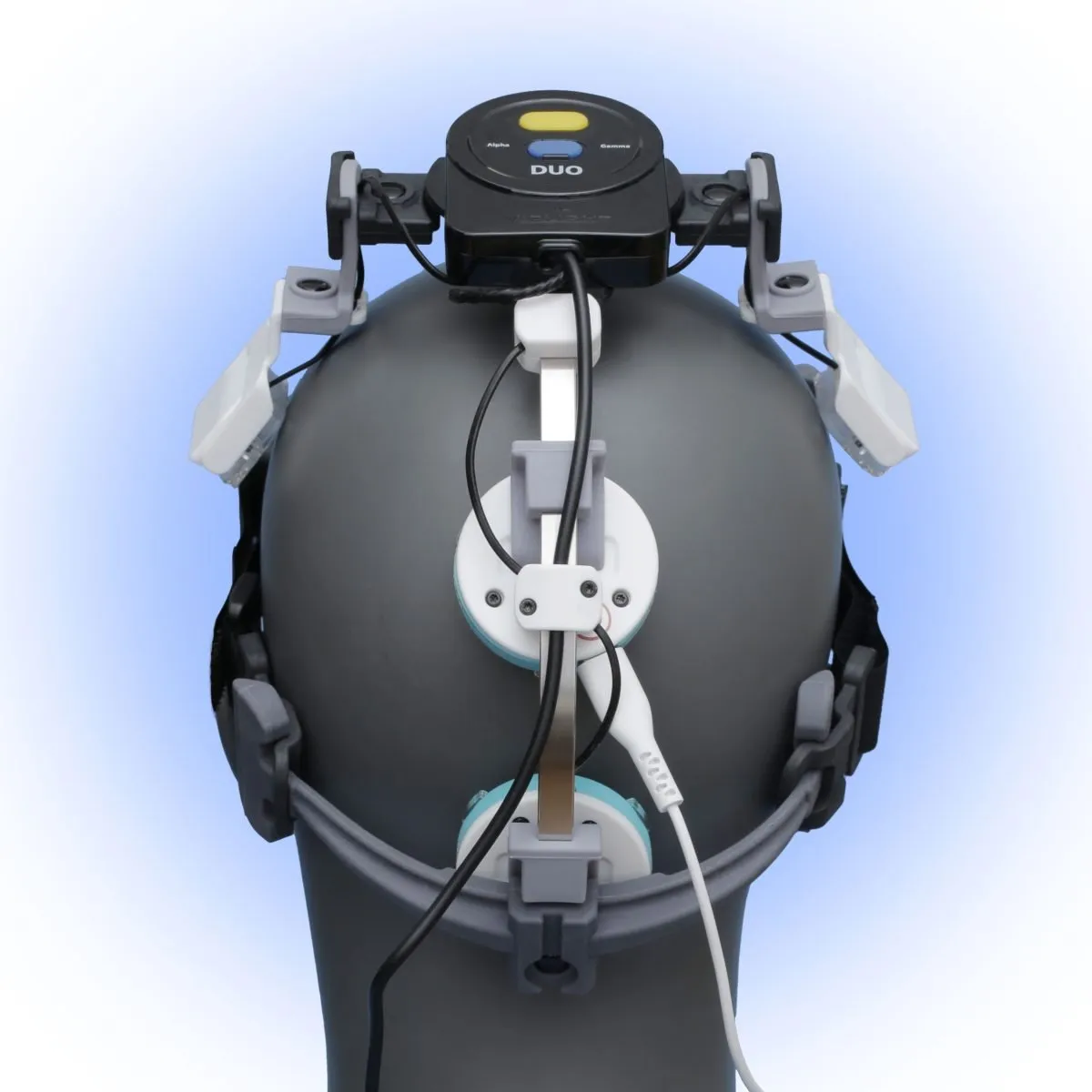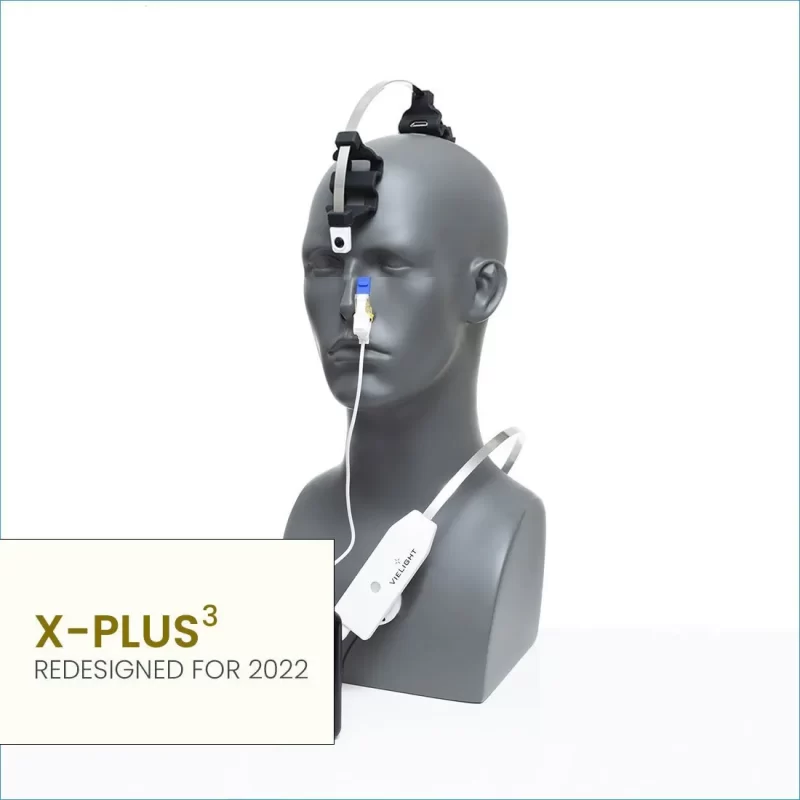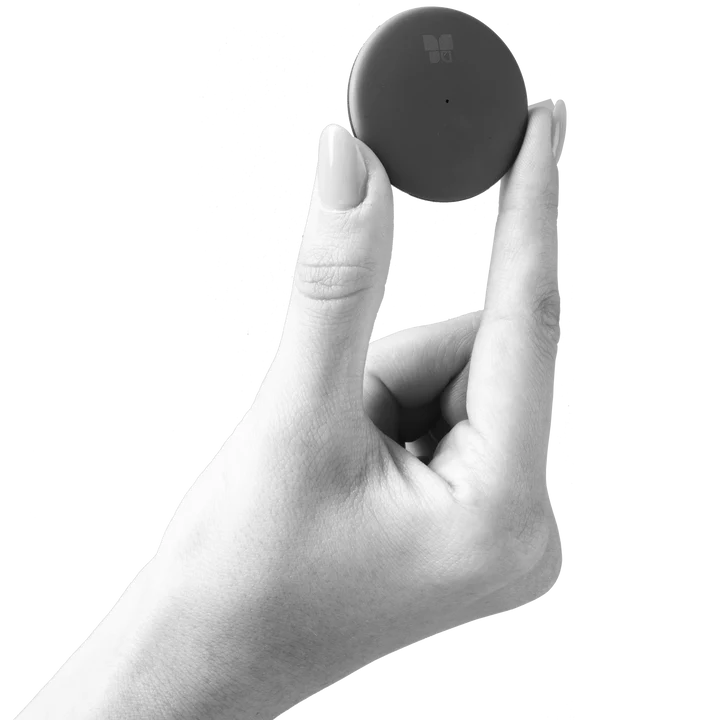Powerful and well-researched transcranial brain photobiomodulation (tPBM) device with intranasal technology, the Vielight Neuro Duo is a state-of-the-art brain stimulation device that is safe, effective, and easy to use. Our patented transcranial-intranasal technology offers a unique and powerful advantage for comprehensive brain stimulation of the default mode network.
The Neuro Duo transmits pulsed near-infrared (NIR) energy through the skull, activating a process known as photobiomodulation. Through efficient engineering, we are able to extract one of the largest amounts of energy (~100 mW/cm2) from a near-infrared LED power source without generating heat.
Gamma (40 Hz): focus, information processing, memory enhancement, energization.
Alpha (10 Hz): mindfulness, learning, relaxation, improved sleep.
The quality of Vielight technology is guaranteed by medical-grade certification.
Why the nose?
Being just 7 centimeters from the brain, the intranasal canal is the most efficient channel for photobiomodulation of the ventral (lower part) area of the brain. These ventral structures in the core of the brain have important functions.
What is the difference between Neuro Alpha and Neuro Gamma?
Alpha induces a more relaxed state of mind while Gamma induces a more focused state of mind.
Additional Information:
Near-infrared light is nearly invisible to the naked eye, making the beam appear weaker than its power density.
Each device contains:
1 neuro headset
1 Neuro intranasal applicator
1 Charger
1 bag for the device
1 silicone protector
1 Carrying case
Vielight Neuro Frequently Asked Questions
What wavelength does the Vielight Neuro emit?
The Vielight Neuro emits pulsed 810nm NIR energy to enable brain stimulation through the process of photobiomodulation.
Why the 810nm wavelength?
The 810 nm wavelength has the deepest penetration through tissue and bone, allowing photonic transmission to neuronal mitochondria.
What is the difference between the Duo, Gamma and Alpha models?
The Gamma model pulses NIR light energy at 40 Hz, which has a neuromodulatory effect on Gamma neural oscillations.
The effects are increased focus, information processing, memory improvement and energization.
The Alpha model pulses NIR light energy at 10 Hz. This frequency is similar to neural alpha waves. The theoretical effects of brain stimulation on alpha waves have a correlation with the resting state of the brain, offering support for mindfulness, learning, relaxation and improved sleep.
The Duo offers these two pulse frequencies – having both pulse frequencies brings more benefits.
How much energy does the brain photobiomodulation device generate?
Our brain photobiomodulation devices generate enough energy to penetrate the skull and produce statistically significant results in independent research studies.
What is the recommended use?
General recommended usage is to use once every other day before experimenting with more frequent use, not to exceed once per day. For more severe cognitive impairments, the recommendation is once a day, six days a week. Please note that these recommendations are theoretical and anecdotal.
 .
. 
The Vielight Neuro allows direct contact with the surface of the scalp to maximize energy transmission and penetration, while microchip-powered cool LED diodes generate substantial energy without releasing heat. Additionally, our patented intranasal technology allows for photobiomodulation of the ventral areas of the brain.

Vielight Neuro – NIR light energy penetration.



Network activity in standard mode on
PBM group – (A) baseline and (B) week
12 and in the usual care group – (C) baseline and (D) week 12. The posterior cingulate cortex (1, -61 and 38 ) was used as
seed in analysis; Height threshold: Punc
< 0.001; PFDR cluster threshold < 0.05.
Cluster-based non-parametric permutation test comparing EEG remaining power spectrum between active and sham tPBM. Topographic maps are color-coded according to t-values from permutation tests. Electrode clusters with a significant difference between the two conditions are marked with a ‘+’ sign (p < 0.05 and αcluster = 0.01). (a) Difference between post- and pre-active tPBM. (b) Difference between post- and pre-sham tPBM. (c) Difference between pre-active and simulated tPMB. (d) Difference between post-active and sham tPMB.
Influence of tPBM on resting-state electroencephalography. The box plot illustrates the median and range of the power spectrum across all electrodes for each oscillatory frequency band. (a) Effect of active tPBM on pre (green line) and post (red line) power spectrum. (b) Effect of sham tPBM on pre (green line) and post (red line) power spectrum. (c) Difference between active and sham tPBM: Post-Pre power spectrum change for active (red line) and sham (green line) tPBM. Active stimulation versus sham stimulation revealed less significant change in delta and theta power and greater change in alpha, beta, and gamma frequency bands.








Reviews
There are no reviews yet.